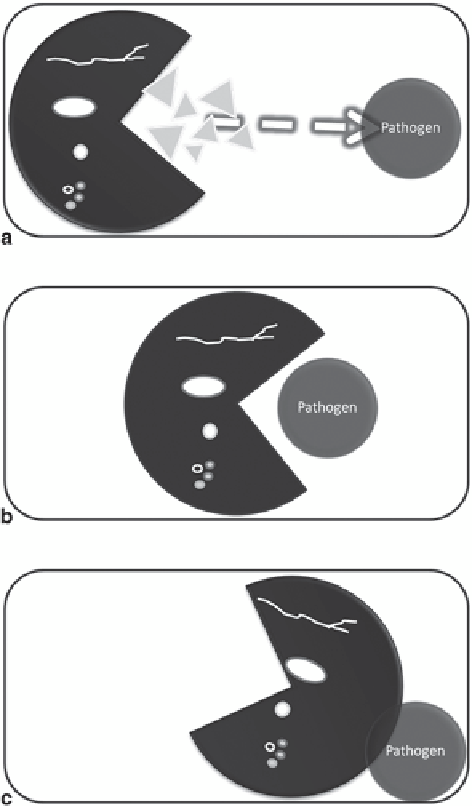Agriculture Reference
In-Depth Information
Fig. 8.2
Hypothetical mech-
anisms of antagonism that
can be established by useful
compost microflora (
black
sphere
) toward the pathogen
(
grew sphere
): antibiosis
(
a
), hyperparasitism (
b
) and
microbiostasis (
c
)
8.3.1.3
Hyperparasitism
Compost can be populated by predators that act directly on the pathogen by kill it or
its propagules. The parasite of a pathogen is called hyperparasite and, subsequently,
the trophic relation is called hyperparasitism. This antagonistic path is the most
specific and not very frequent, although it is very effective when occurs. The most
popular microbial hyperparasite belong to
Trichoderma
group. However, this an-
tagonistic mechanism in composts is rather rare, because it is linked to the presence
of specific pathogen predators.
Ascomycetes communities carried by biosolid compost suppressing
Sclerotium
rolfsii
on sclerotia surface, were identified by a metagenomic approach, as myco-
parasites belonging to
Chaetomium
,
Geomyces
,
Penicillium
,
Thielavia
,
Petriella
and
Trichoderma
species (Danon et al.
2010
).

